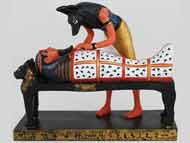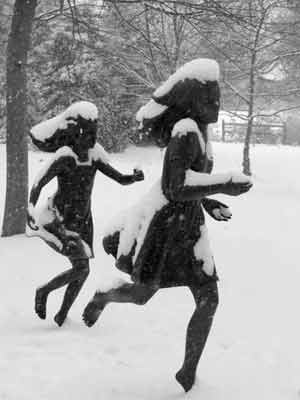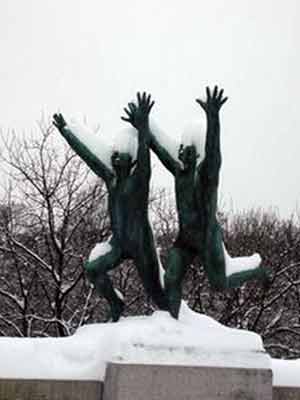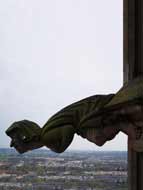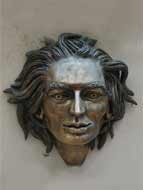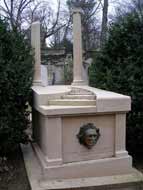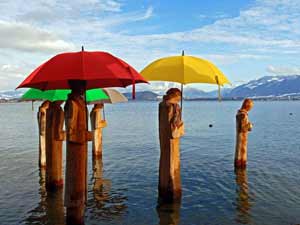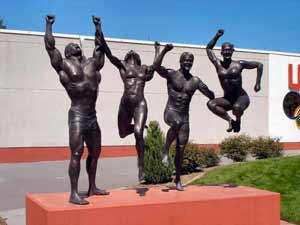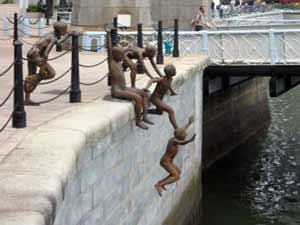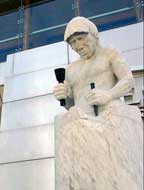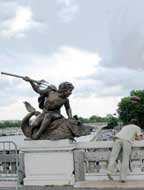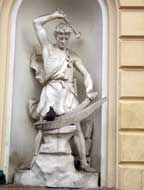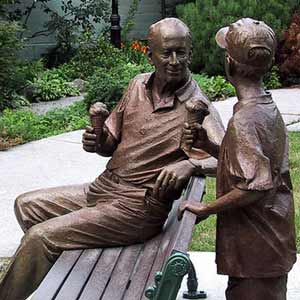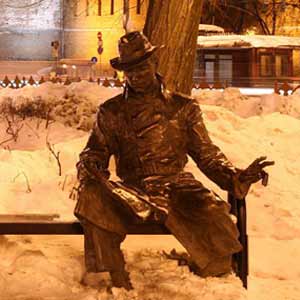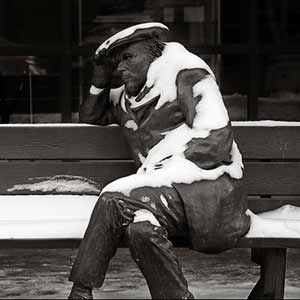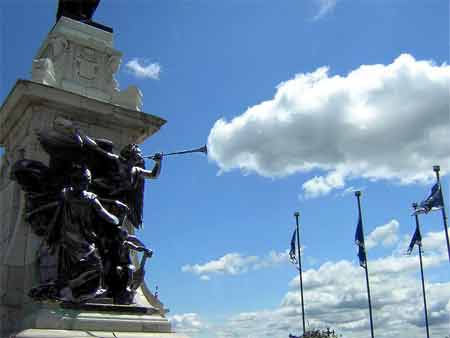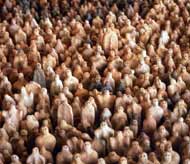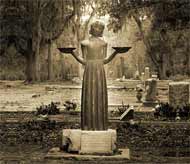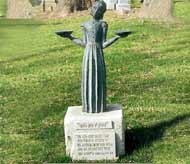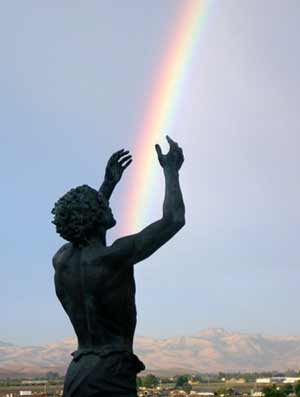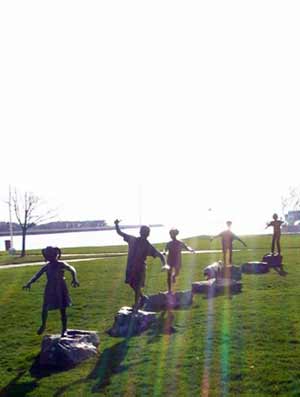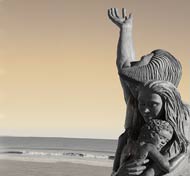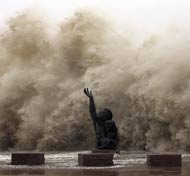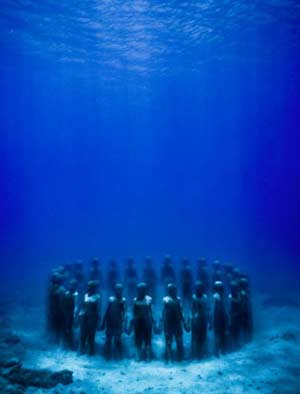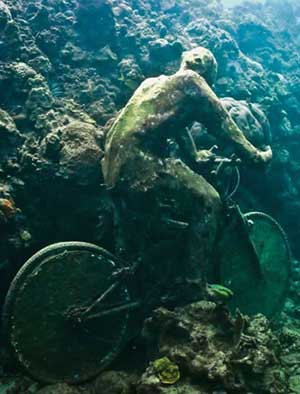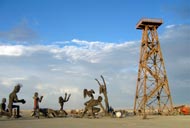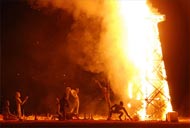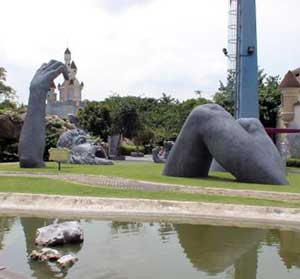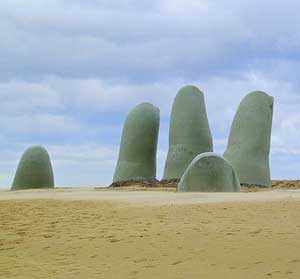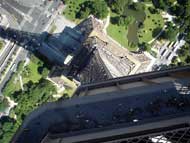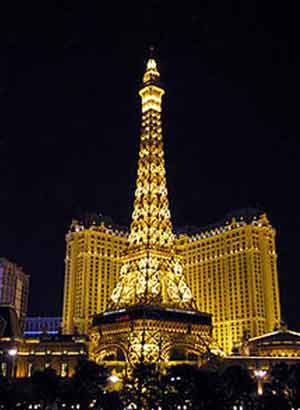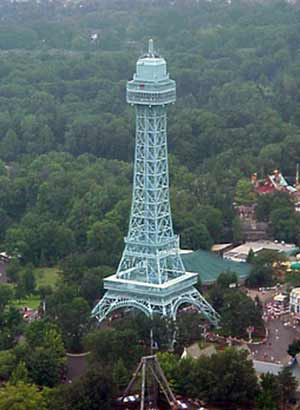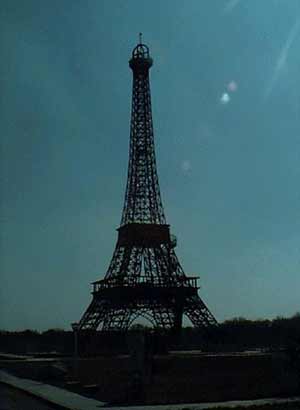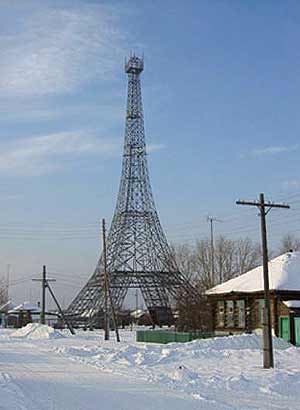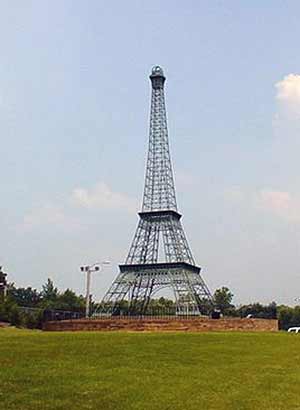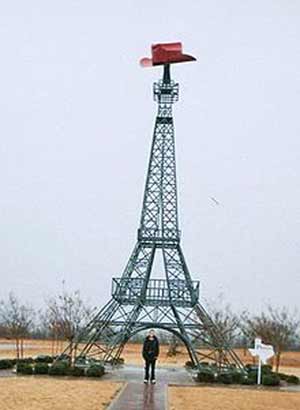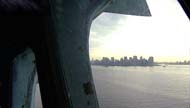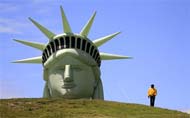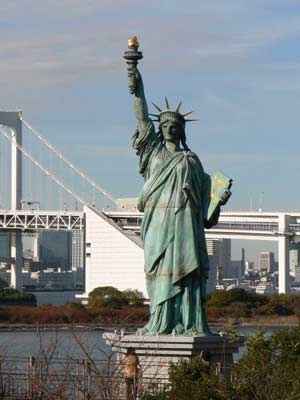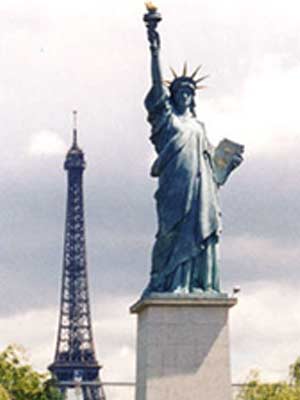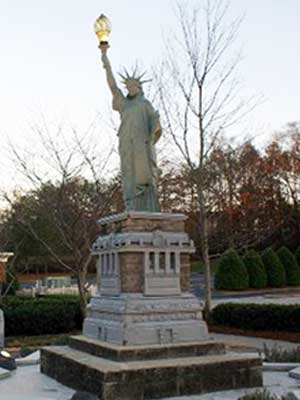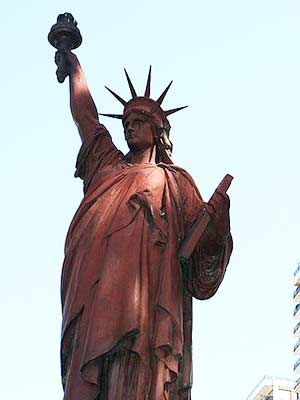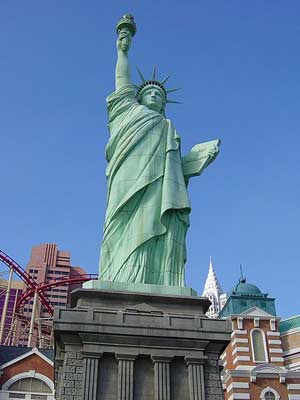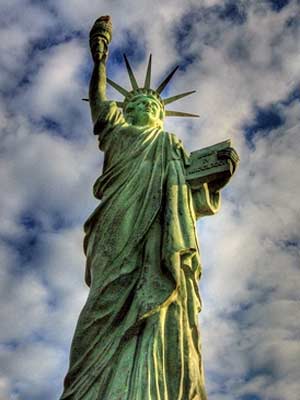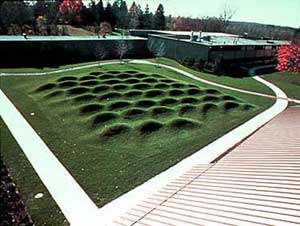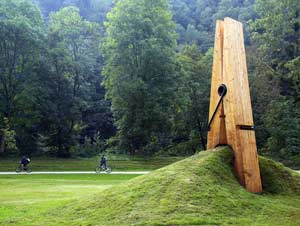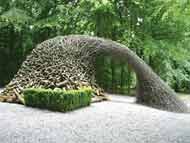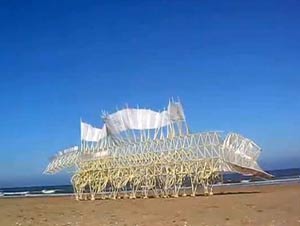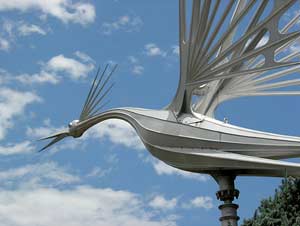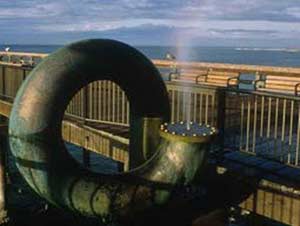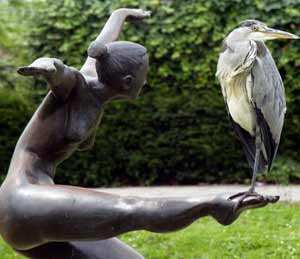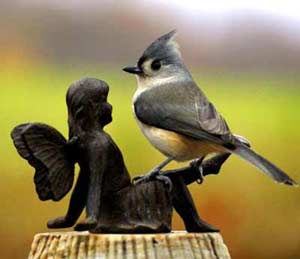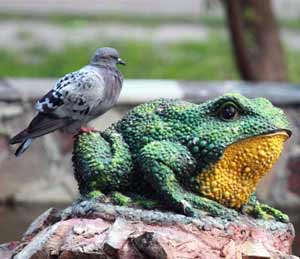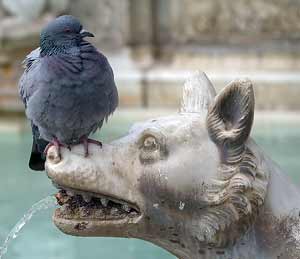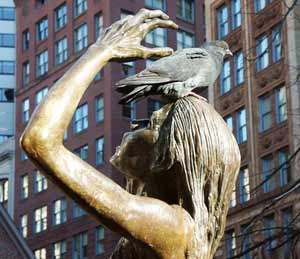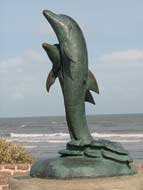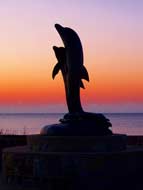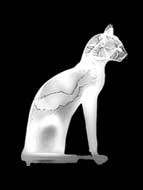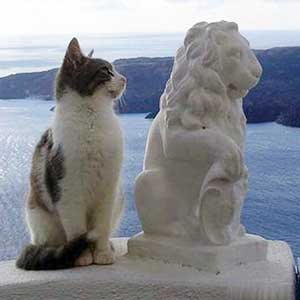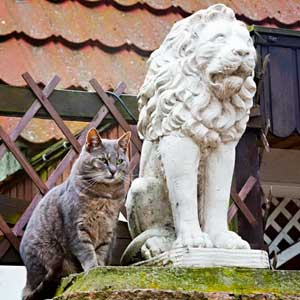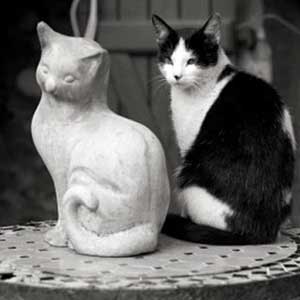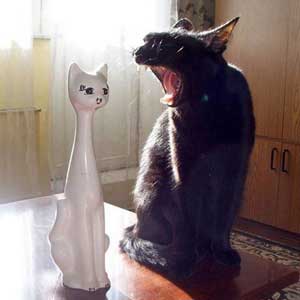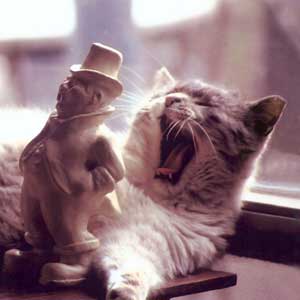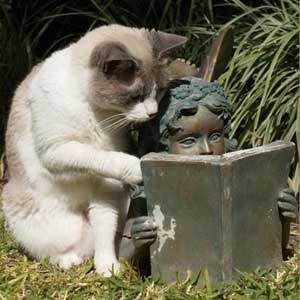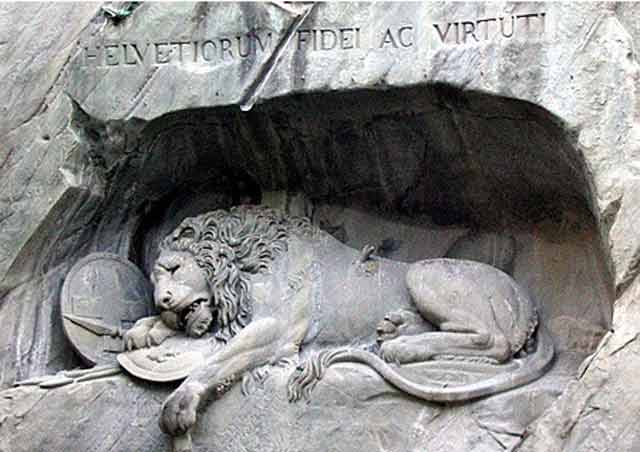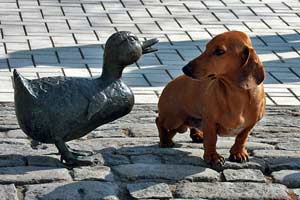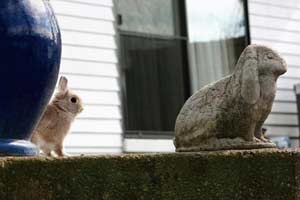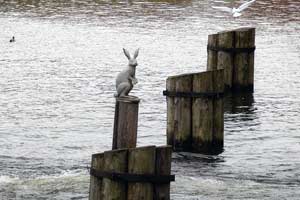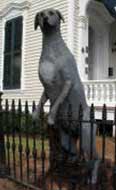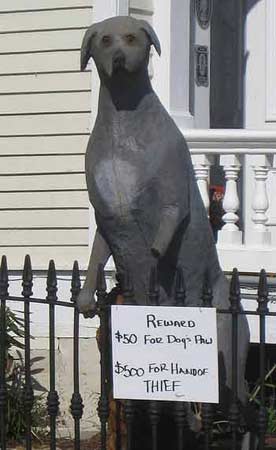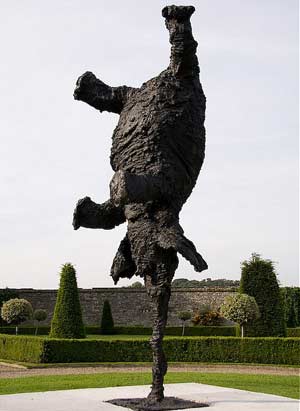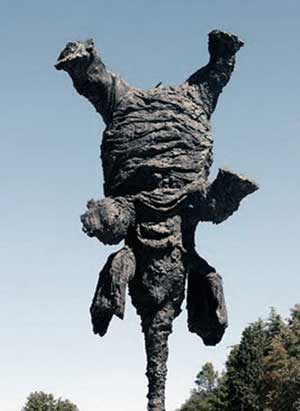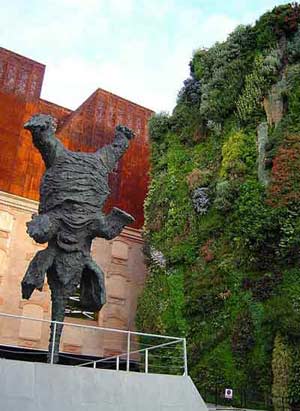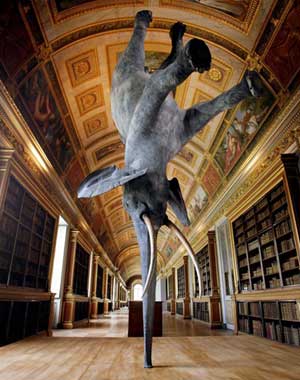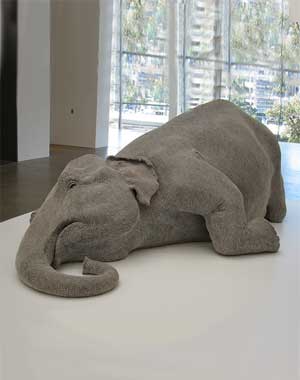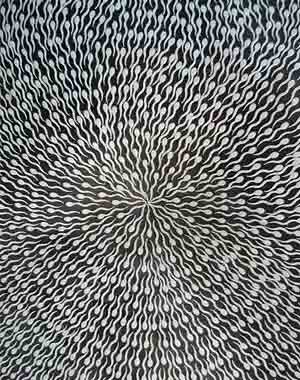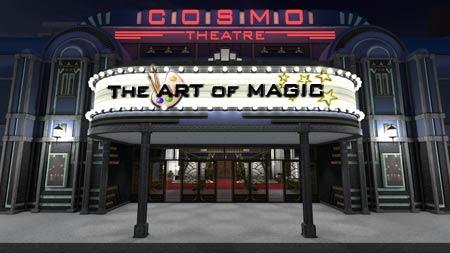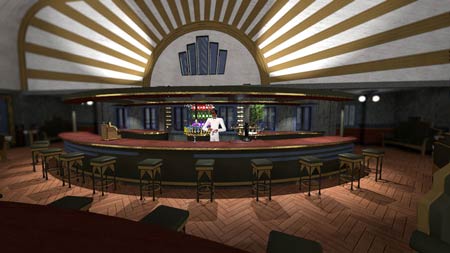I’ve searched all the parks in all the cities and found no statues of committees.
—Protests against Nothingness
Nov. 15, 2010
| A statue is a 3-dimensional work of art, usually of a person or animal, usually created by sculpting, carving, moulding, or casting. Normally full-length, as opposed to a bust, and at least close to life-size, or larger, a statue’s primary concern is representational. A small statue, usually small enough to be picked up, is called a statuette or figurine. The term living statue refers to a mime artist who poses like a statue or mannequin, usually with realistic statue-like makeup, sometimes for hours at a time. The tableau vivant, or group of living statues, was a regular feature of medieval and Renaissance festivities and pageantry. Sculpture is a much more all-inclusive term. It is a 3-dimensional artwork created by shaping or combining hard materials, typically stone such as marble, metal, glass, or wood, or plastic materials such as clay, textiles, polymers and softer metals, so there is a lot of overlap, though the term sculpture has been extended to works including sound, text and light (and I’m ignoring most of these here). Vague enough? What might that cover? (Obviously this page will not represent an in-depth look at any of it.) |
||
| Anubis, the jackal-headed Egyptian god of the afterlife, is stooped over an altar, upon which he is intent, finishing the last of the traditional wrappings needed before burial. Set with a multitude of rich details, including hieroglyphic writings along the edge of the altar and painted in traditional hues of gold, black, white, and red, this statue is said (by the person trying to sell it) to make what could be a macabre scene a celebration of the god and his gentle care over those who have passed on into another life. (Stop! I’m getting weepy.) |
||
| Going to the opposite extreme: New CyberDog Entrance, Stables Market, Camden, London. Cyberdog is a clothing brand founded in the early 1990s that specialises in producing futuristic cyber-styled clothing. Cyberpunk styling is deconstructed and it hints of a future dystopia where technology takes over the world. Heavy metal jewellery, leather, big chunky biker boots, and Bladerunner-style makeup are important here. Many influences are taken from science-fiction and films. |
||
| Now for the stuff in-between. I’ve divided this more-or-less into People, Other, and Animals. I’ll get People out of the way first, because they’re perhaps the least interesting. |
||
| Gargoyle over Ulm Minster, Lutheran Church, Ulm Germany. This is the tallest church in the world. In 1763 Wolfgang Amadeus Mozart is known to have played the organ here (and for some decades, this organ was the world’s largest). Albert Einstein’s father donated money for a statue of the biblical prophet Jeremiah, which is located here. (Albert was born in Ulm. The Einsteins were non-observant Jews and Albert attended a Catholic elementary school for several years.) The Ulm Minster foundation stone was laid on 30 June 1377. On 31 May 1890, work on the main steeple was finally finished, 513 years after construction began. |
||
| A memorial is an object which serves as a focus for memory of something, usually a person (who has died) or an event. Popular forms of memorials include landmark objects or art objects such as sculptures, statues or fountains (and even entire parks). The most common type of memorial is the gravestone or the memorial plaque. Also common are war memorials commemorating those who have died in wars. |
||
| This tribute to a young man who died is actually a relief sculpture. Valerio died in 1988. The inscription on his grave reads: “Il aimait Stendahl Pavarotti Gamine les Pink Floyd mais à 29 ans…” — in English: “He loved Stendhal, Pavarotti, Gamine, Pink Floyd; but at 29 years…” He is interred at the Cimetière du Père-Lachaise in Paris. |
| Perhaps you’ve been wondering how statues are born? You can now see that some of them are self-made… |
||
| Young statues can be a bit naughty but older statues sometimes turn hard and even a bit mean… Bronze, “Boy Fishing with Trident”, sculpted in 1900, is located on the Pont du Alexandre III bridge in Paris. And the workman’s statue is located at the Vanha Ylioppilastalo (Old Studenthouse) in Helsinki, Finland. |
| Some statuettes are very tiny. The tiny ones can sometimes have population problems. "Amazonian Field" by Antony Gormley, 1992, puts the viewer in the uncomfortable position of being confronted by numerous figures made from the earth itself, all looking towards him questioningly. Said Gormley, “I want the art to look back at us, its makers (and later viewers), as if we are responsible — responsible for the world that it, and we, are in.” A close-up of Gormley’s “Amazonian Field” shows the their upturned faces. |
| Some of the more attractive younger memorial sculptures achieve a measure of fame greater than that of their creators. Midnight in the Garden of Good and Evil: This sculpture, known as “The Bird Girl”, was created in 1936 by sculptor Sylvia Shaw Judson in Lake Forest, Illinois, modelled by a slight, 8-year-old named Lorraine Greenman. Four statues were made. One went to the Bonaventure Cemetery in Savannah, Georgia, grave of Lucy Boyd Trosdal, in the Trosdal family plot. Originally designed both as art and as a birdseed holder, in 1994 a photo of the statue appeared on the best selling novel, Midnight in the Garden of Good & Evil by John Berendt. Due to the popularity of the novel, the statue had to be removed from the cemetery (or risk being defaced); it was put on public display at the Telfair Museum of Art in Savannah. Via Wikipedia. |
| Some statues are located in precarious positions (through no fault of their own). This is a memorial beside the seawall to the 6,000 men, women, and children of Galveston who lost their lives in 1900. All of Galveston was destroyed. |
||
| Occasionally accidents happen. The seawall obviously doesn’t always keep the sea out. This was taken during the 2008 hurricane (Ike) that struck Galveston. However, I believe the statue survived. |
||
When Statues Drown in a Storm, Where Do They Go?
Jason deCaires Taylor created the world’s first underwater sculpture park at Moilinere Bay, Grenada. (Now he has several.) His sculptures have become artificial reefs, and he feels they explore the relationship between modern art and the environment.
| “Crude Awakening” was Burning Man 2007’s homage to the coming downfall of the US Empire and fossil-fueled civilisation in general. It was a performance in 3 acts: Construction (done), Destruction (underway), and Rebirth (future). In the 1st act, a 90-foot-tall oil derrick dominates the playa’s southern skyline. Nine metallic human figures surround the derrick, each captured in various poses of worship. |
||
| “The Revered Oil Derrick Burns to the Ground” in the 2nd act. Is Western civilisation heading for a similar fall? In the 3rd act, a giant redwood had been trucked in at great expense and was to be planted in place of the derrick. It was to symbolise and inspire the transition away from fossil fuels, but the final act was never completed. The tree was evicted from the playa because it “was a violation of the festival’s no-plants policy and an enormous MOOP (matter out of place) liability.” (Oops. And just think of all the fossil fuels used just to get it there.) |
||
| That’s all of the People statues I’ve included. The next part — Other (specifically monuments, kinetic sculptures, and earth art) — is concerned more with sculpture than statuary. A monument is a type of structure either explicitly created to commemorate a person or important event or which has become important to a social group as a part of their remembrance of past events. They are frequently used to improve the appearance of a city or location. Cities that are planned — such as Washington DC, New Delhi and Brasília — are often built around monuments. The Washington Monument’s location (and vertical geometry, though not physical detail) was conceived to help organise public space in the city before it was ever connected with George Washington. Older cities have monuments placed at locations that are already important or are sometimes redesigned to focus on one. As Shelley suggested in his famous poem “Ozymandias” (“Look on my works, ye Mighty, and despair!”), the purpose of monuments is very often to impress or awe. In English the word “monumental” is often used in reference to something of extraordinary size and power. The word comes from the Latin “monere,” which means “to remind” or “to warn.” Assuming that imitation is a sincere form of flattery, I’d have to say that two monuments, Gustave Eiffel’s 1889 “La Tour Eiffel” in Paris (built as the entrance arch to the 1889 World’s Fair, which marked the centennial celebration of the French Revolution) and Frederic Auguste Bartholdi’s 1885 statue “Liberty Enlightening the World” on Liberty Island in the New York Harbor, are two of the most popular (or perhaps they’re just two of the most easily copied). Unusual views of the originals are followed by a few examples of the imitations. |
||
| The Eiffel Tower from below. |
||
| This is the view from the Eiffel Tower’s highest platform. |
||
It Is Better to Fail in Originality than to Succeed in Imitation
| Hundreds of smaller replicas of the Statue of Liberty have been created worldwide. They are in Europe, North America (hundreds), South America, Asia and Australia. |
||
| The view from Lady Liberty’s Crown (it takes going up 354 steps to get there). |
||
| The view OF Lady Liberty’s Crown. To be honest, this is a full-scale balloon replica of the Statue of Liberty’s head shortly after its inflation in Seattle’s Gas Works Park. The 30-foot head remained atop the hill at the park through the 2010 annual Independence Day celebration. |
||
Bad Artists Copy … Good Artists Steal
| The term environmental sculpture is variously defined. A development of the art of the 20th century, environmental sculpture usually creates or alters the environment for the viewer, as opposed to presenting itself figurally or monumentally before the viewer. A frequent trait of larger environmental sculptures is that one can actually enter or pass through the sculpture and be partially or completely surrounded by it. Also, in the same spirit, it may be designed to generate shadows or reflections, or to colour the light in the surrounding area. |
||
This environmental sculpture by Maya Lin is made of a combination of soil and sand; the field is blanketed with a verdant sod that makes the uniquely manicured lawn a luxurious place for relaxing, studying, or playing. Located on the University of Michigan campus, unlike many examples of earthworks (or earth art), it isn’t hidden away or inaccessible. This 10,000-square-foot work comprises a series of 50 grass “waves” in 8 rows. People nestle within the comfortable dip of a wave or perch on a crest where the piece can be surveyed as a whole.
| All Andy Goldsworthy's compositions are subject to the erosive effects of the earth and some last for only the few seconds it takes to document them. Even so, his work stirs the imagination. This piece wasn’t specifically identified as Goldsworthy’s and I was unable to locate any verification — but it is very similar to other things he’s done, so I’m going with that. |
||
| Moving on to Kinetic Sculptures. Kinetic art is art that contains moving parts or depends on motion for its effect. The moving parts are generally powered by wind, a motor or the observer. Kinetic art encompasses a wide variety of overlapping techniques and styles. |
||
The Earth, the Air, the Fire, the Water, Muscles, and the Occasional Electric Motor Are Needed for Power
| Now for Animals — as you might suspect, artworks of animals abound. We’ll start with birds. Specifically, we’ll start with real birds sitting on statues (or, in two cases, statuettes). Pigeons seem to have a rather special affinity for statues, so they get slightly special treatment, with one statuette and two statues. |
||
| On to mammals… |
||
| On the Galveston, Texas beach is a sculpture by David W Moore. It has been photographed by day by Mike from La Marque and it has also been photographed by night by Jim White. |
| The Gayer-Anderson cat is one of the best known objects in the British Museum collection. In 2007 the cat was X-rayed, analysed and carefully examined under a microscope, producing some unexpected and surprising results. Small square features all over the body are metal “core-pins” or “chaplets”, showing the cat was produced using a process called lost-wax casting. X-ray fluorescence shows that the body metal of the cat is made of bronze containing 85% copper, 13% tin, 2% arsenic and 0.2% lead. Extensive damage (prior to the museum’s ownership) was also revealed, including a large crack all the way around the body, which had been filled and painted. X-rays of the head of the cat reveal a metal cylinder, held in place with a series of hooks and wires fitted inside, probably to stop the head from falling off. A silver necklace and plaque still remain around the cat’s neck and the ears and nose are pierced to hold jewellery (although the current earrings, while ancient, might not be original to the cat because in an early photograph, the cat is shown wearing a different pair). The eye sockets, which are now empty, would originally have held eyes made of stone or glass. Analysis of small strips of metal wrapped around the tail show that they are made of a different metal alloy than the rest of the cat and would’ve been a different colour, producing the effect of a striped tail. |
Bertel Thorvaldsen was born in Copenhagen in 1770 (according to some accounts, in 1768), the son of an Icelander who settled in Denmark and there carried on the trade of woodcarver. This account is disputed by some Icelanders, who claim Thorvaldsen was born in Iceland, then moved to Denmark. Thorvaldsen died suddenly in 1844 and bequeathed a great part of his fortune to be used for building and endowing a museum in Copenhagen; to fill the museum, he left his collection of works of art and the models for all his sculptures. He is buried in the museum courtyard — as per his request, under a bed of roses. Thorvaldsen’s “Lion Monument” (1819) is in Lucerne, Switzerland. It commemorates the sacrifice of more than 600 Swiss Guards who died defending the Tuileries during the French Revolution. A dying lion lies across broken symbols of the French monarchy.
| Misc animal statues (and no, the duck isn’t a mammal, but at least the dog is)... |
||
| On 1 September 2008 the Houston, Texas area received a blow from Hurricane Ike. No one realised the type of storm surge that was attached to this category 2 hurricane (it proved to be equivalent to a category 5). About 40,000 of the island’s trees died after they were swamped by storm waters. Contractors cut down the dead trees and left the stumps, which became dogs, angels, dolphins, toads, mermaids and more. At least 3 of them were carved into dogs, 2 of which were done by Dayle Lewis. I picked this one because I really liked it. |
||
| This section ends with one of my favourite mammals — elephants. I ran across the first photo below — a statue of an elephant balancing on his trunk. I found it surprising because I had seen a very similar statue near Paris. This photo had no information as to where the statue was located, so I searched for elephant statues — and turned up something a bit odd — an apparent herd of trunk-balancing elephants… |
||
But I finally located the elephant shown below — the one I had remembered. It’s a much classier statue, I think. This sculpture is by Daniel Firman. It’s located in the Diane Galerie as part of the exhibition “Chateau de Tokyo/Palais de Fontainebleau” in the Fontainebleau Castle, Paris, France (at least it was on 7 September 2008).
| One final (dying) elephant… |
||
“The Skin Speaks a Language not Its Own” by sculptor Bharti Kher, Gallery of Modern Art, Brisbane. The fibreglass sculpture, which took her 10 months to create, was recently sold by Sotheby’s for almost £1,000,000. The elephant’s entire surface is painted with tiny Bindi (these look like sperm to me — maybe that’s what is meant by the “Cycle of Rebirth”?)
At left is the entrance to the Cosmo Theatre. The grand opening has been delayed a bit because we had to wait for Unity to release a new version of their software — but things are still coming along nicely. On the right is a wide-angle view of the upstairs Bojangles Bar showing Benny the Bartender tidying things up in preparation for the grand opening. We’ll keep you posted.
Brought to you by Thaumaturgy Studios, Ltd, Wellington, New Zealand
 Animals
Animals Animation
Animation Art of Playing Cards
Art of Playing Cards Drugs
Drugs Education
Education Environment
Environment Flying
Flying History
History Humour
Humour Immigration
Immigration Info/Tech
Info/Tech Intellectual/Entertaining
Intellectual/Entertaining Lifestyles
Lifestyles Men
Men Money/Politics/Law
Money/Politics/Law New Jersey
New Jersey Odds and Oddities
Odds and Oddities Older & Under
Older & Under Photography
Photography Prisons
Prisons Relationships
Relationships Science
Science Social/Cultural
Social/Cultural Terrorism
Terrorism Wellington
Wellington Working
Working Zero Return Investment
Zero Return Investment